A function named newProdCode needs to be defined that accepts two input parameters, an integer value for itemID and a string value for productCategory, and returns a new product code.
What is the correct DataWeave code to define the newProdCode function?
Which of the below activity doesn't support parallel execution?
Refer to exhibits.
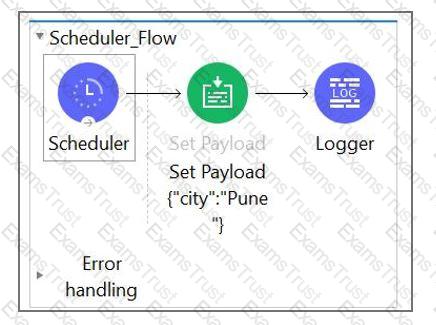
What message should be added to Logger component so that logger prints "The city is Pune" (Double quote should not be part of logged message)?
How we can scale deployed Mule application vertically on cloudhub?
What is the correct Syntax to add a customer ID as a URI parameter in the HTTP listener's path attribute?
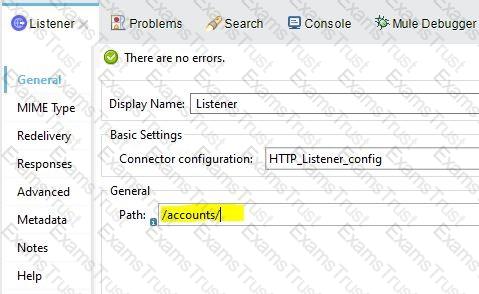
Refer to the exhibits. In the choice router, the When expression for the domestic shipping route is set to "#[payload= "FR"]".
What is the output of logger after the execution of choice router is completed?
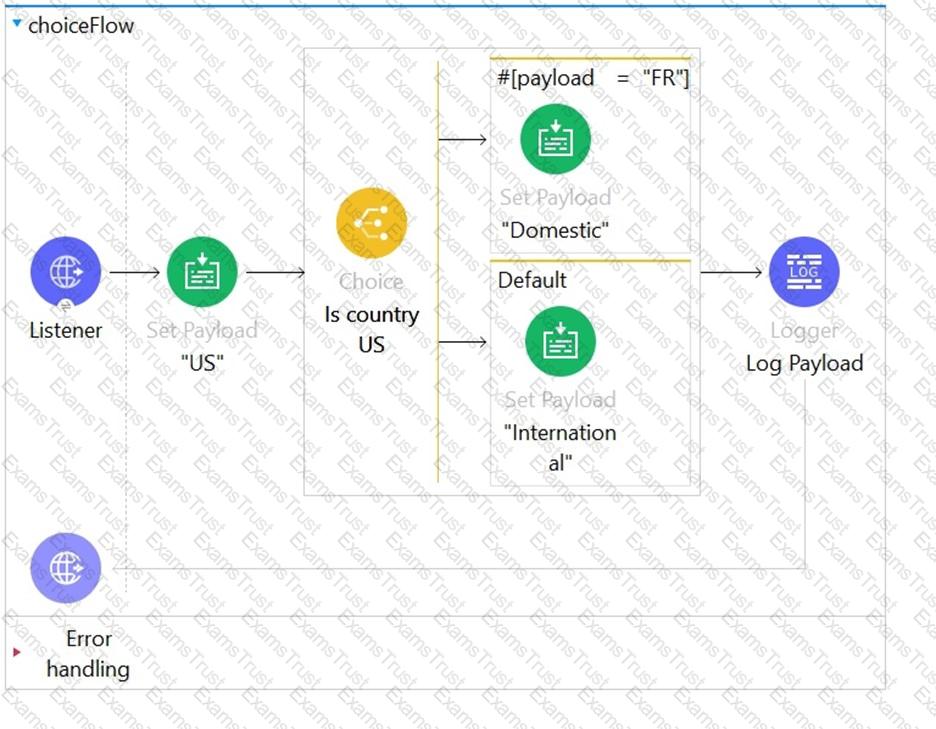
Refer to the exhibits. The webClient flow sends requests to the mockServer Row's HTTP Listener.
An HTTP: METHOD_NOT ALLOWED error is thrown each time the webClient flow executes.
What attribute value must be changed in the webClient flow's HTTP Request operation to prevent this error from being thrown?
Refer to the exhibit.

What is the output payload in the On Complete phase
What is the output type of the DataWeave map operator?
What should this endpoint return? &surname=Bell
Refer to the exhibits.

This main mule application calls a separate flow called as ShippingAddress which returns the address corresponding to the name of the user sent to it as input. Output of this ShippingAddress is stored in a target variable named address.
Next set of requirement is to have a setPayload transformer which will set below two values
1) orderkey which needs to set to be equal to the order element received in the original request payload.
2) addressKey which needs to be set to be equal to the address received in response of ShippingAddress flow
What is the straightforward way to properly configure the Set Payload transformer with the required data?
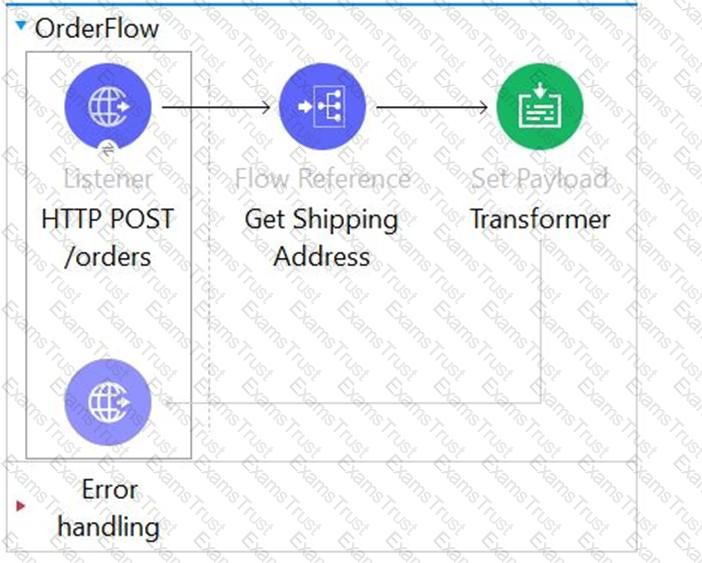

A mule application is being developed which will process POST requests coming from clients containing the name and order information. Sample request is as below
What MuleSoft API-led connectivity layer is intended to expose part of a backend database without business logic?
Refer to the exhibits.
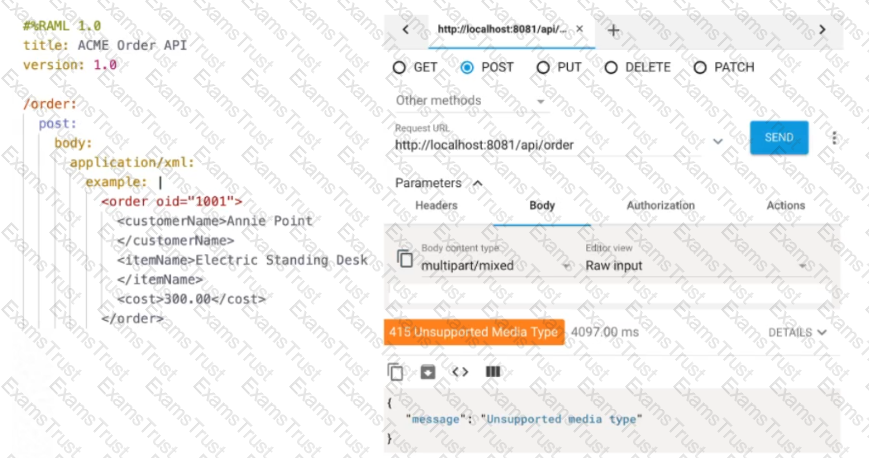
The web client sends a POST request to the ACME Order API with an XML payload. An error is returned.
What should be changed in the request so that a success response code is returned to the web client?
Refer to the exhibits.
A web client sends a GET request to the HTTP Listener.
What response message is returned to the web client?
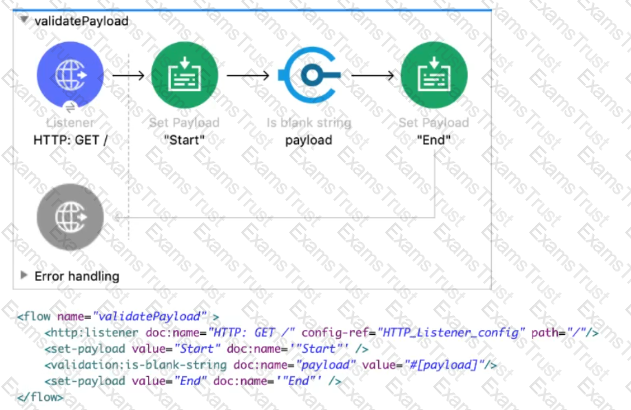
Refer to the exhibits.
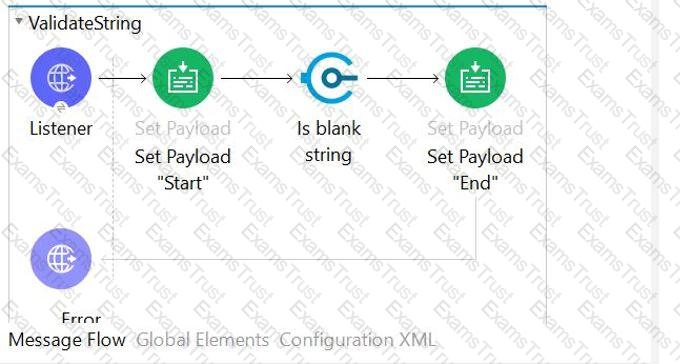

A web client submits the request to the HTTP Listener. What response message would be returned to web client?
Refer to the exhibit.
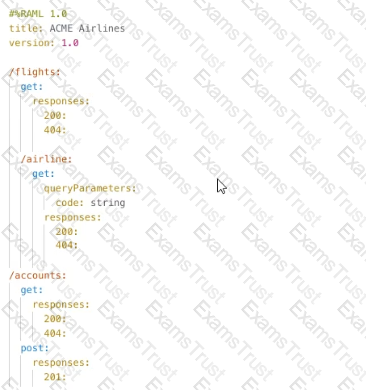
How many private flows does APIKIT generate from the RAML specification?
What DataWeave expression transforms the example XML input to the CSV output?
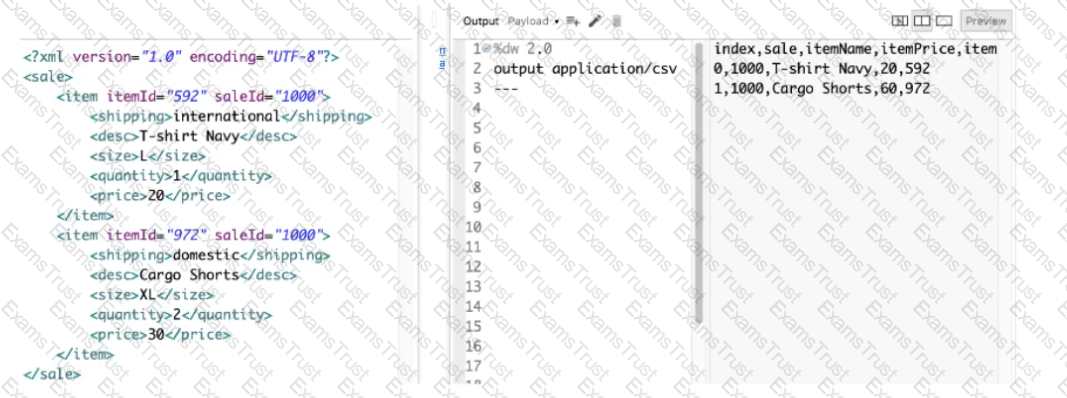
A)

B)

C)

D)

Refer to the exhibits. A company has defined this Book data type and Book example to be used in APIs. What is valid RAML for an API that uses this Book data type and Book example?
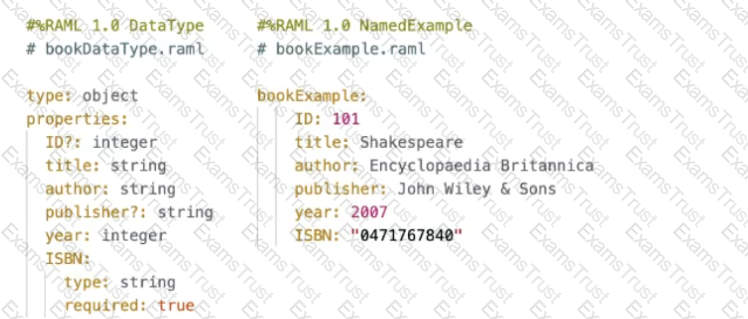
A)
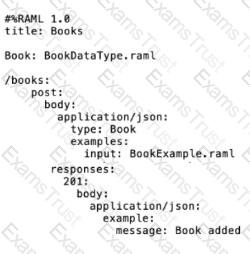
B)
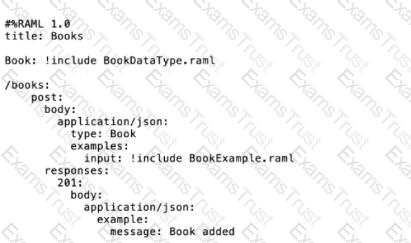
C)
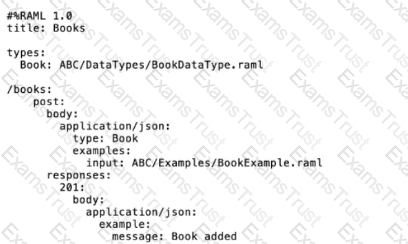
D)
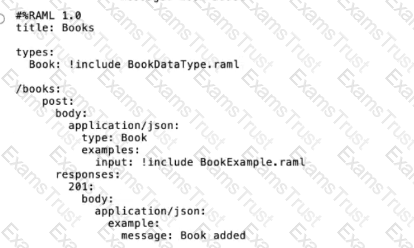
A flow needs to combine and return data from two different data sources. It contains a Database SELECT operation followed by an HTTP Request operation.
What is the method to capture both payloads so the payload from the second request does not overwrite that from the first?
In the Database On Table Row operation, what does the Watermark column enable the On Table Row operation to do?
A shopping API contains a method to look up store details by department
To get information for a particular store, web clients will submit requests with a query parameter named department and a URI parameter named storeld.
What is a valid RAML snippet that supports requests from web clients to get data for a specific storeld and department name?
A)

B)

C)

D)

A Mule flow has three Set Variable transformers. What global data structure can be used to access the variables?
Refer to the exhibits.
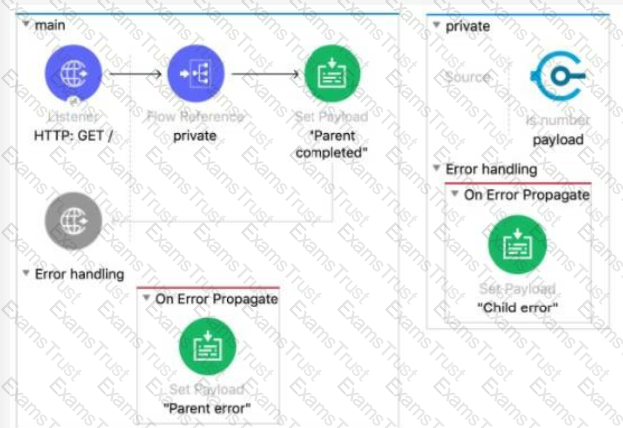
The Mule application does NOT define any global error handlers.
The Validation component in the private flow throws an error
What response message is returned to a web client request to the main flow's HTTP Listener?
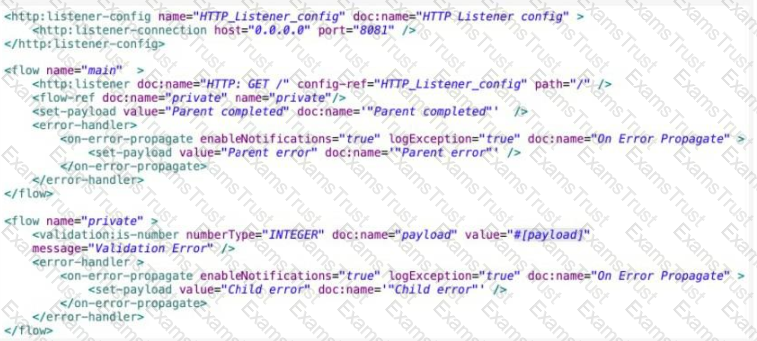
A Mule application's HTTP Listener is configured with the HTTP protocol. The HTTP listeners port attribute is configured with a property placeholder named http.port. The mule application sets the http.port property placeholder's value to 9090
The Mule application is deployed to CloudHub without setting any properties in the Runtime manager Properties tab and a log message reports the status of the HTTP listener after the Mule application deployment completes.
After the mule applications is deployed, what information is reported in the worker logs related to the port on which the Mule application's HTTP Listener listens?
Which one of them is NOT a flow in Mule?
How are multiple conditions used in a Choice router to route events?
Refer to the exhibit. The input array of strings is passed to the batch job, which does NOT do any filtering or aggregating. What payload is logged by the Logger component?

Refer to the exhibits. The Mule application does NOT define any global error handler elements. A web client sends a GET request to the HTTP Listener. What response message is returned to the web client?
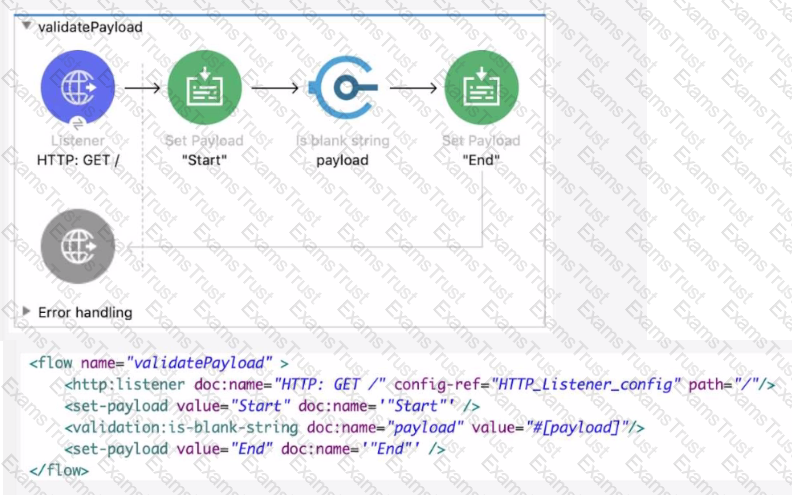
A Database On Table Row listener retrieves data from a CUSTOMER table that contains a primary key userjd column and an increasing kxjin_date_time column. Neither column allows duplicate values.
How should the listener be configured so it retrieves each row at most one time?
A Batch Job scope has five batch steps. An event processor throws an error in the second batch step because the input data is incomplete. What is the default behavior of the batch job after the error is thrown?
Refer to the exhibit.
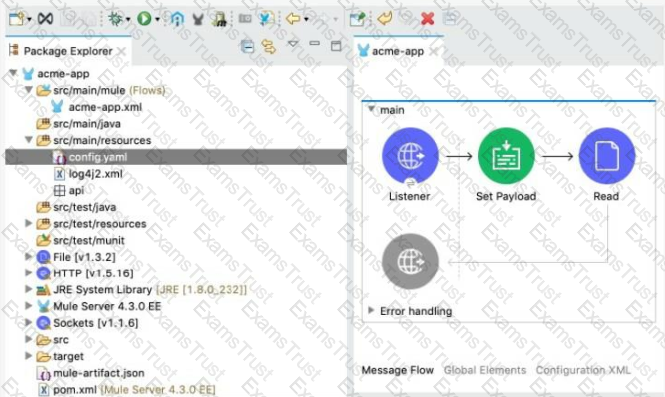
The Mule application's connectors are configured with property placeholders whose values are set in the config.yaml file
What must be added to the Mule application to link the config.yaml file's values with the property placeholders?
What execution model is used by For Each and Batch Job scopes?
Refer to the exhibits.

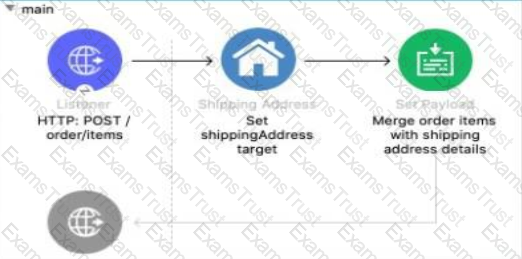

A Mule application is being developed to process web client POST requests with payloads containing order information including the user name and purchased items The Shipping connector returns a shipping address for the input payloads user name The Shipping connector's Shipping Address operation is configured with a target named shippingAddress.
The Set Payload transformer needs to set an item key equal to the items value from the original received payload and a shippinglnfo key equal to the the ShippingAddress operation's response
What is a straightforward way to property configure the Set Payload transformer with the required data?
A)

B)

C)

D)

What valid RAML retrieves details on a specific by its orderld as a URL parameter?
A)

B)

C)

D)

Refer to the exhibits. In the color flow , both the variable named color and payload are set to "red".
An HTTP POST request is then sent to the decideColor flow's HTTP Listener.
What is the payload value at the Logger component after the HTTP request completes?
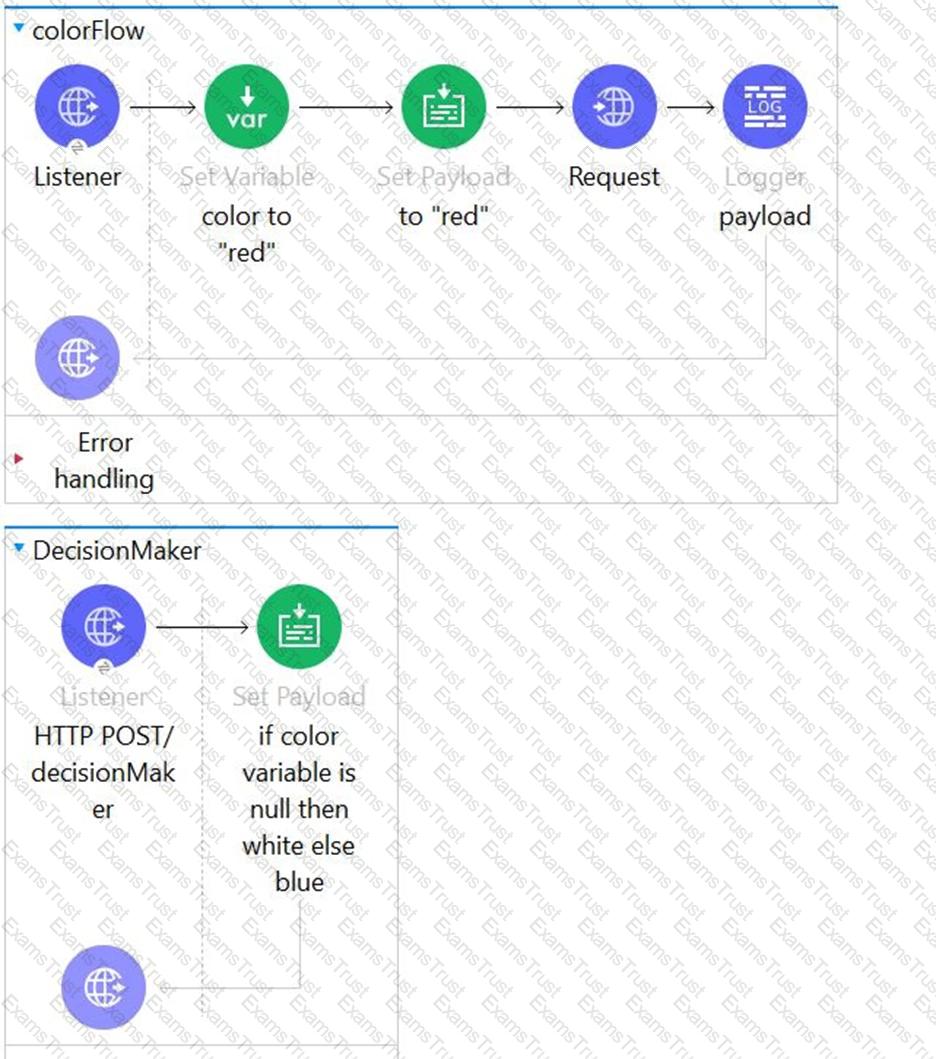
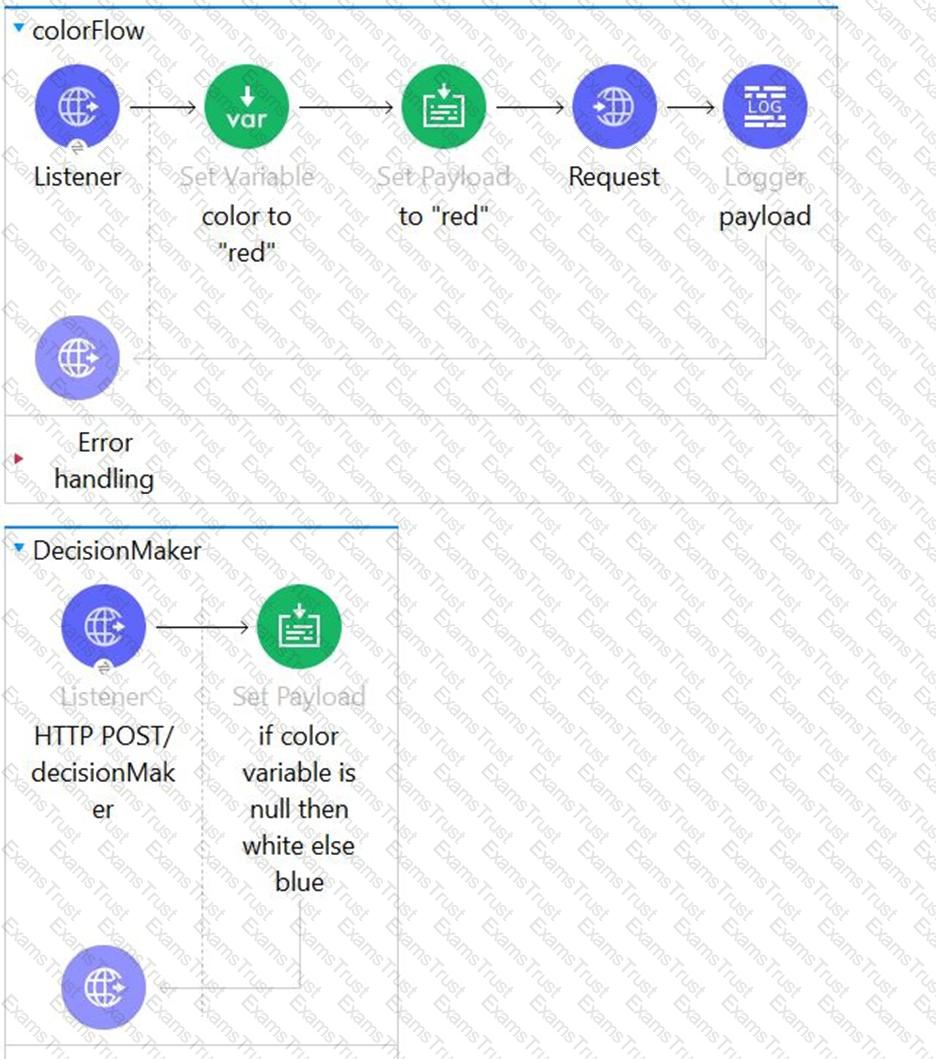

Refer to the exhibits.
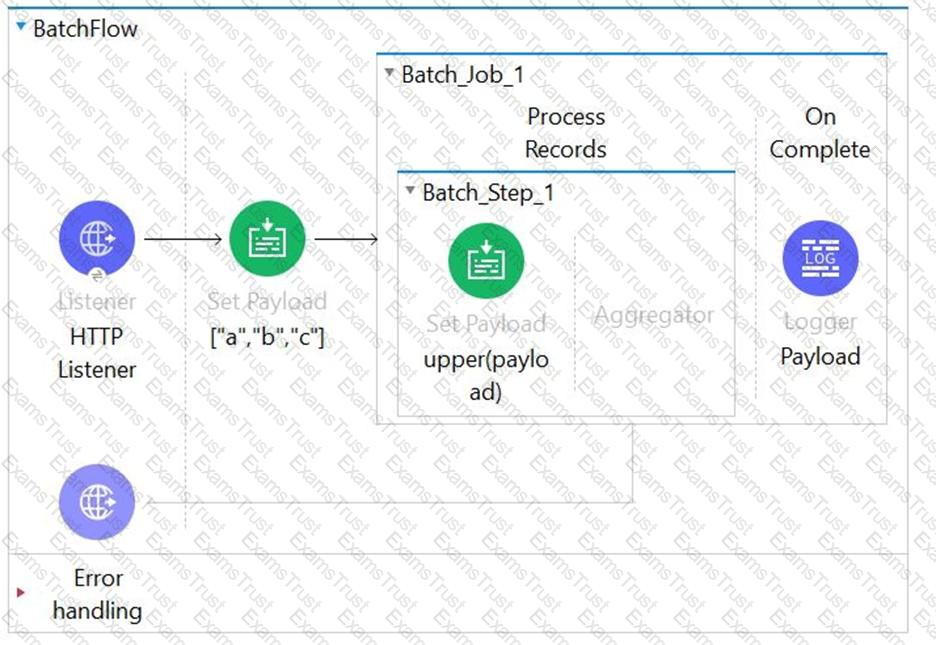

The Batch job processes an array of strings.
What information is logged by the logger component after the batch job scope completes processing of the input payload?
Refer to the exhibits.
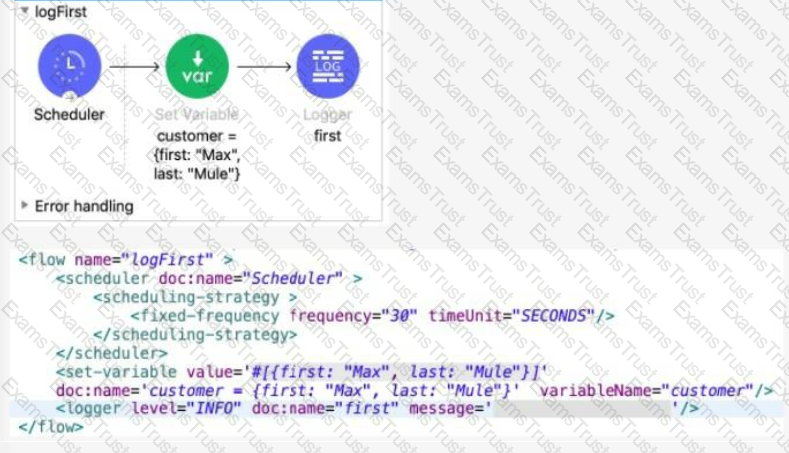
The Set Variable transformer is set with value #[ [ first "Max" last "Mule"} ].
What is a valid DataWeave expression to set as the message attribute of the Logger to access the value "Max" from the Mule event?
Refer to the exhibits.
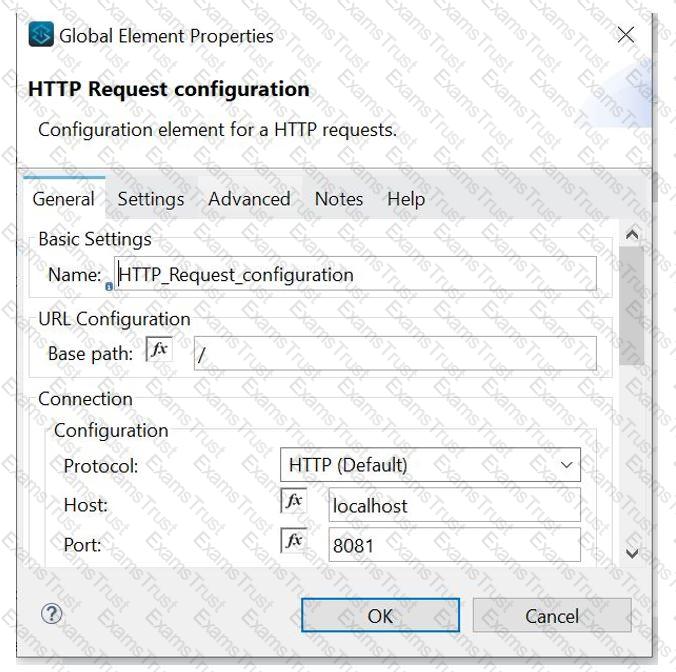
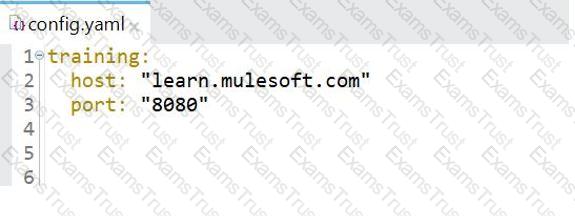
Mule application has an HTTP request configuration where host name is hardcoded. Organization is looking to move host and port values to configuration file. What valid expression can be used to so that HTTP configuration can pick the value from configuration file?
Which of the below is not the mandatory configurations for HTTP Listener?
Refer to the exhibit. What is the output of logger component?
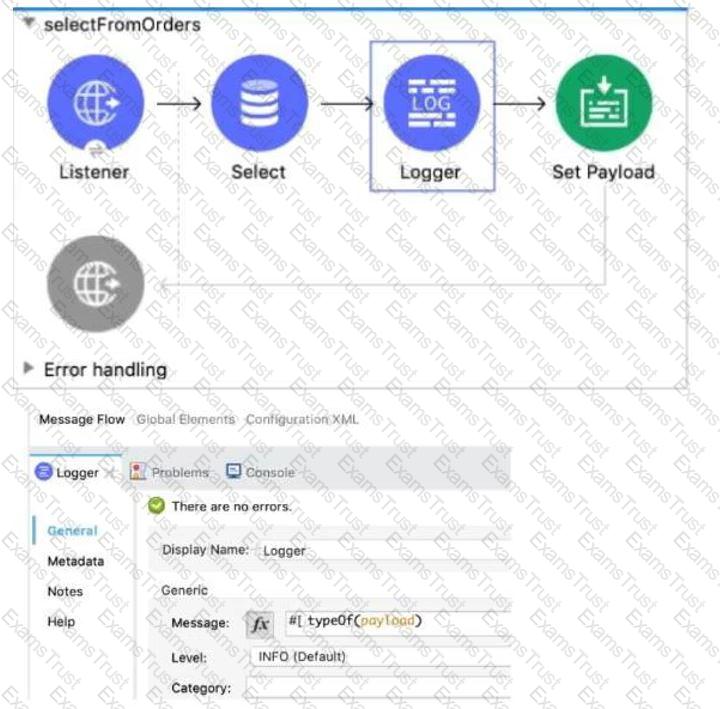
A REST connect module is generated for a RAML specification. and then the rest connect module is imported in mule application in Anypoint Studio. For each method of the RAML specification , what does the REST connect module provide?
A web client sends a request to http;//localhost:8081?dept=sales. What is the correct DataWeave expression to access the value of dept?
What does C4E stands for in MuleSoft recommended IT operating model?
What is the correct syntax to define and call a function in Database?
A)

B)

C)

D)

According to MuleSoft. what is the first step to create a Modern API?
Refer to the exhibit.
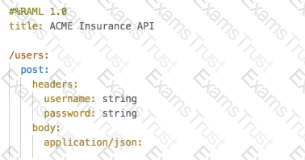
What is the correct way to create a user?
A)

B)
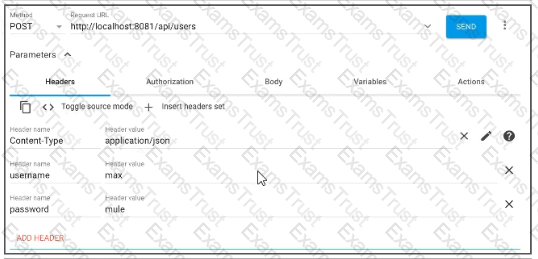
C)
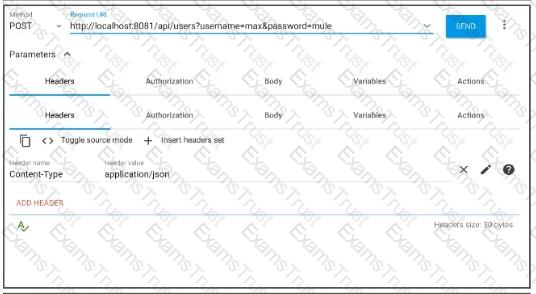
D)
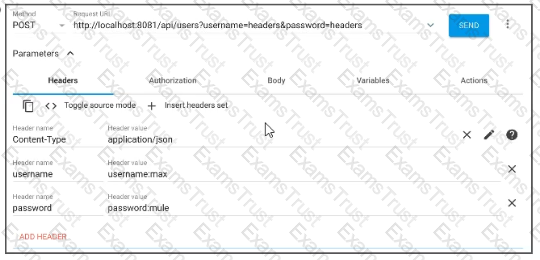
Refer to the exhibit.

What DataWeave expression transforms the conductorlds array to the XML output?
A)

B)

C)

D)

Refer to the exhibits.
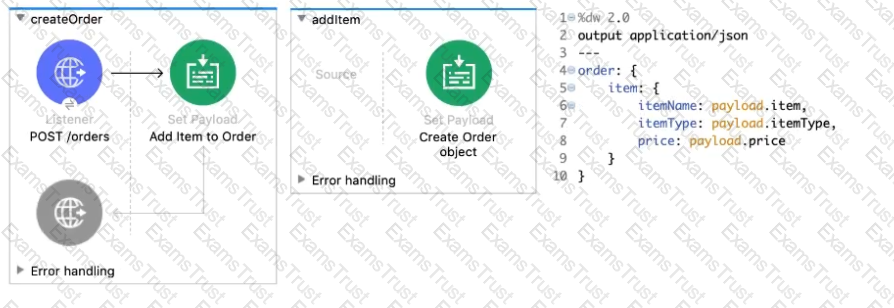
The Set Payload transformer In the addltem subflow uses DataWeave to create an order object.
What is the correct DataWeave code for the Set Payload transformer in the createOrder flow to use the addltem subflow to add a router cable with the price of 100 to the order?
In the execution of scatter gather, the "sleep 2 sec" Flow Reference takes about 2 sec to complete, and the "sleep 8 sec" Flow Reference takes about 8 sec to complete.
About how many sec does it take from the Scatter-Gather is called until the "Set Payload" transformer is called?
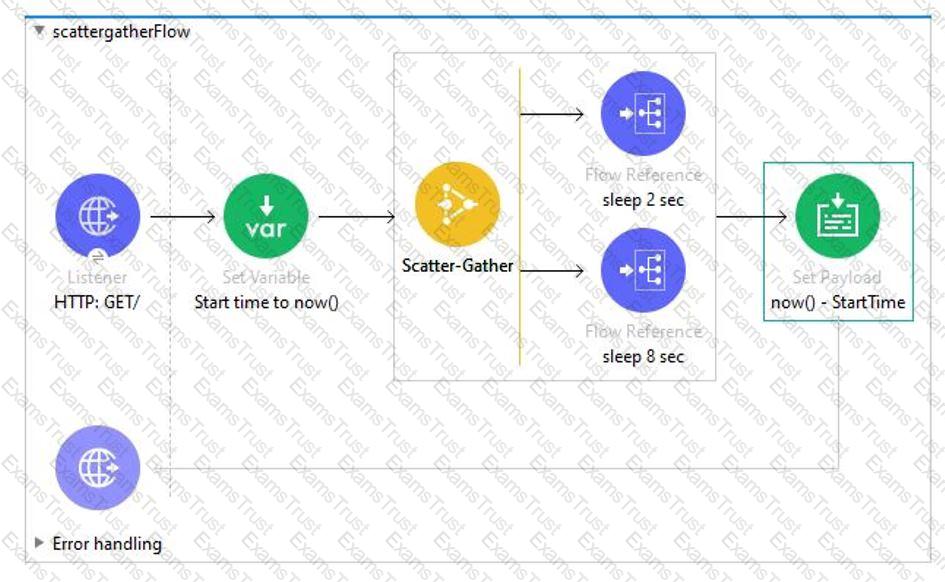
An organization's Center for enablement (C4E)has built foundational assets (API specifications and implementation templates, common frameworks, and best practices guides) and published them to Anypoint Exchange.
What is a metric related to these foundational assets that helps the organization measure the success of it's C4E efforts?
A Scatter-Gather processes three separate HTTP requests. Each request returns a Mule event with a JSON payload. What is the final output of the Scatter-Gather?
Refer to the exhibit.
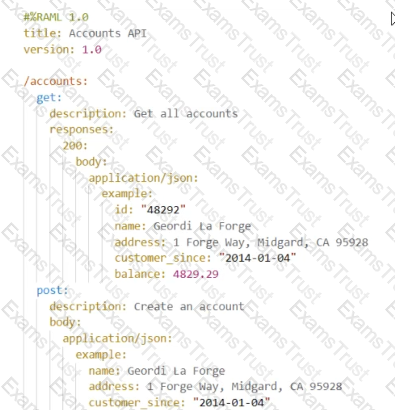
What data is expected by the POST /accounts endpoint?
A)

B)

C)

D)

What is not true about application properties?
An HTTP Request operation sends an HTTP request with a non-empty JSON object payload to an external HTTP endpoint. The response from the external HTTP endpoint returns an XML body. The result is stored in a target named the Result.
What is the payload at the event processor after the HTTP Request?
A company has an API to manage departments, with each department identified by a unique deptld. The API was built with RAML according to MuleSoft best practices.
What is valid RAML to specify a method to update the details for a specific department?
A)

B)

C)

D)

What asset cannot be created using Design Center?
Refer to the exhibits.
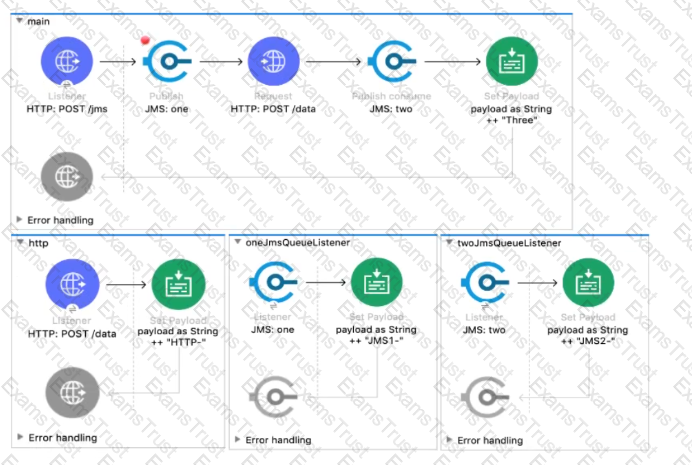

A web client sends a POST request to the HTTP Listener with the payload "Hello-". What response is returned to the web client?
What response is returned to the web client?
An API has been created in Design Center. What is the next step to make the API discoverable?
Refer to the exhibit.
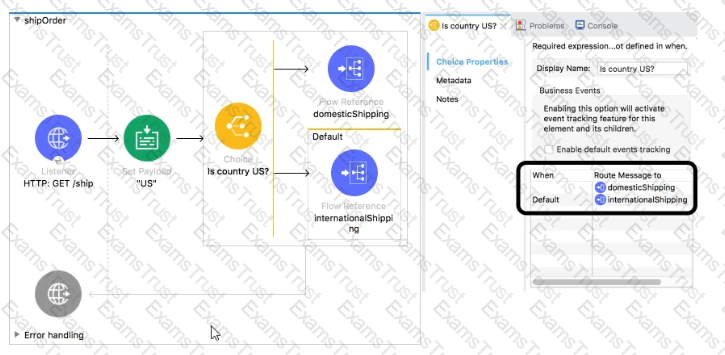
What is a valid expression for the Choice router’s when expression to route events to the documenticShipping flow?
Refer to the exhibits. What payload is logged at the end of the main flow?
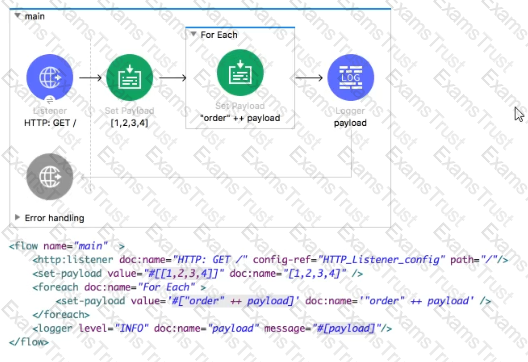
A flow contains an HTTP Listener as the event source. What is the DataWeave expression to log the Content-Type header using a Logger component?
Refer to the exhibits.
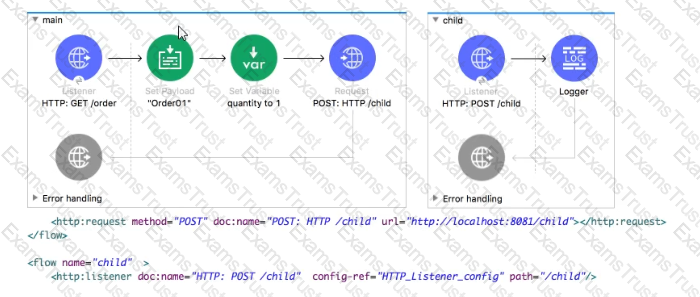
The main flow contains an HTTP Request. The HTTP Listeners and HTTP Request use default configurations.
What values are accessible in the child flow after a web client submits a request to col or = red?
How to import Core (dw::Core) module into your DataWeave scripts?
Refer to the exhibits.
A web client sends sale data in a POST request to the Mule application. The Transform Message component then enrich the payload by prepending a vendor name to the sale data.
What is written to the sales.csv file when the flow executes?
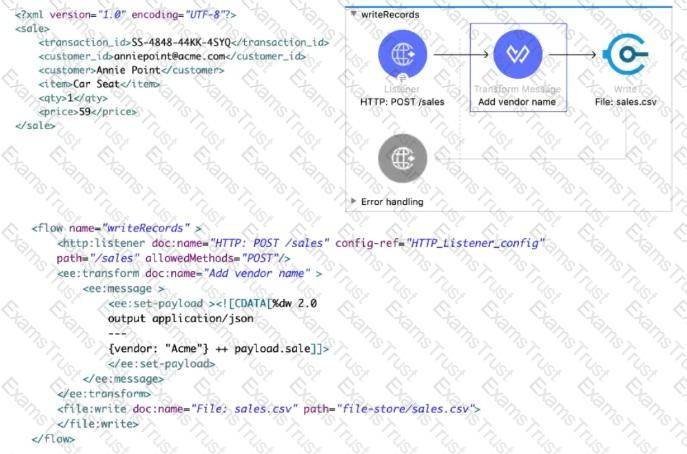
Refer to the exhibits.
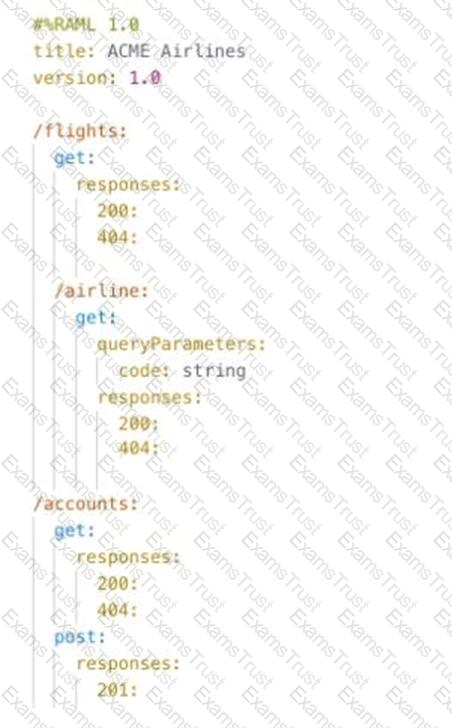
How many private flows does APIKIt generate from RAML specification?
What is the correct syntax for a Logger component to output a message with the contents of a 3SON Object payload?
Refer to the exhibits.
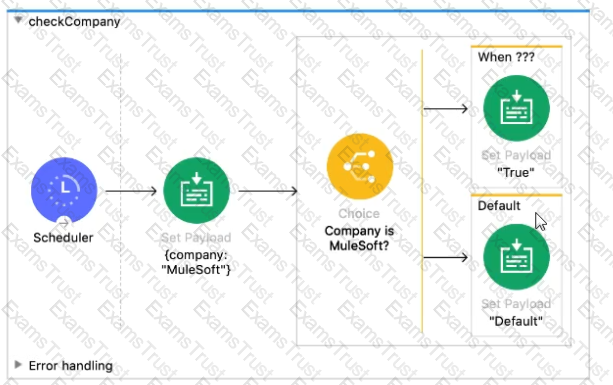

The
What is a valid
Refer to the exhibit.
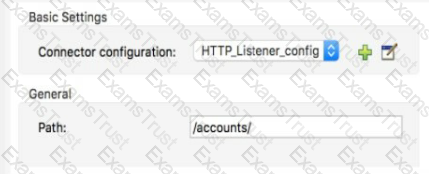
What is the correct syntax to add a customer ID as a URI parameter in an HTTP Listener's path attribute?
To avoid hard-coding values, a flow uses some property placeholders and the corresponding values are stored in a configuration file.
Where does the configuration file's location need to be specified in the Mule application?
Refer to the exhibits.

What DataWeave expression transforms the conductorIds array to the XML output?